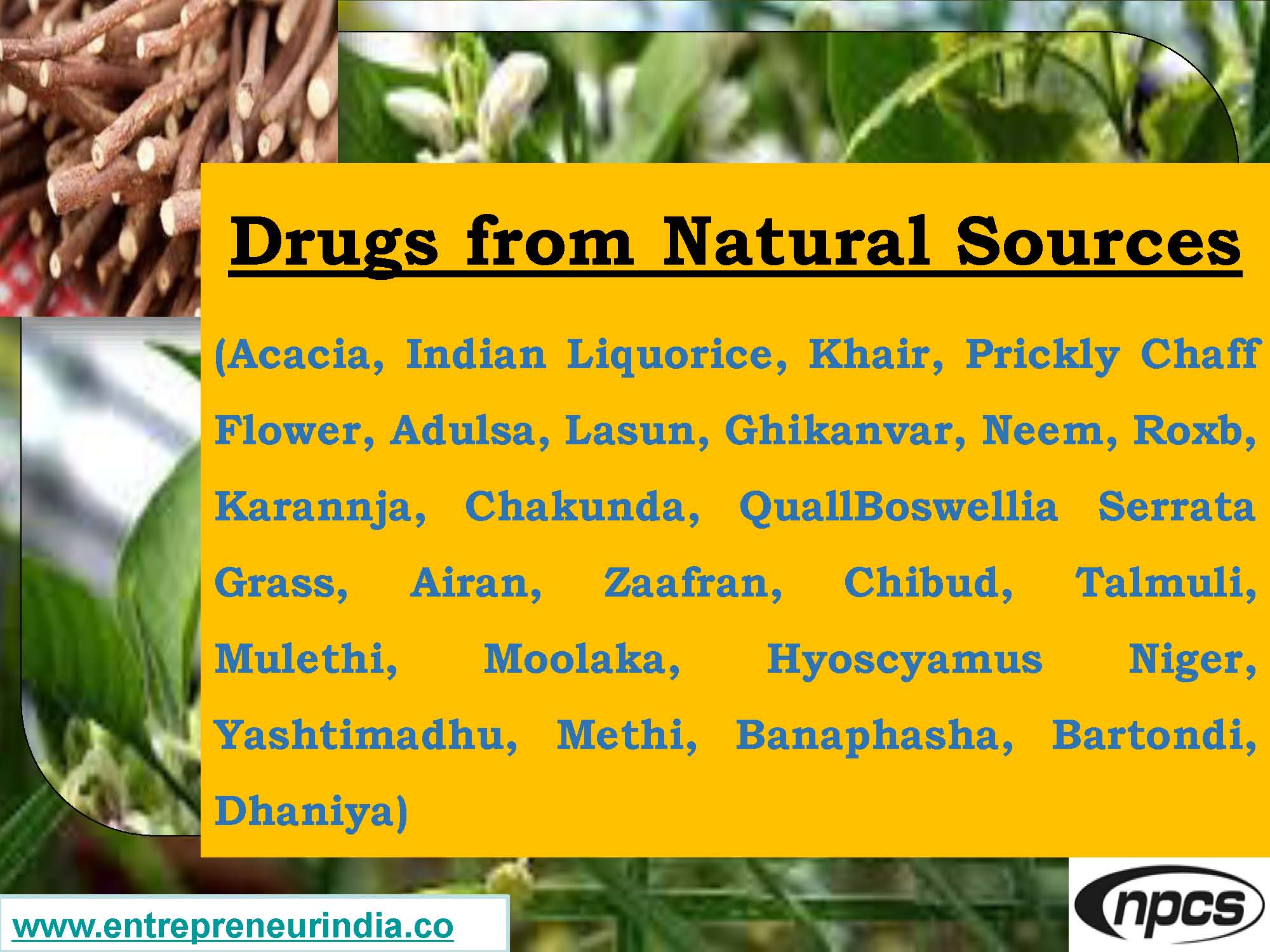
The global pharmaceutical industry increasingly turns to drugs from natural sources due to their safety profile, holistic benefits, and rich ethnomedicinal history. Plants such as neem, acacia, and Indian liquorice have played a pivotal role in traditional medicine systems like Ayurveda and Unani for centuries. Today, modern science confirms their efficacy in treating a wide range of ailments—from respiratory and digestive issues to inflammation and infections. Moreover, these botanicals serve as raw materials for bioactive compounds used in standardized drugs. This article explores some of the most significant medicinal plants and their relevance in natural drug development.
Medicinal Plants Used in Drugs from Natural Sources
Plant-derived drugs have the advantage of being biodegradable, biocompatible, and rich in diverse phytochemicals. The following species represent the vast potential of drugs from natural sources in both traditional and modern medicine.
Read More :Paper Composite Can
Acacia (Babool): Antiseptic and Anti-inflammatory Agent
Acacia, commonly known as Babool, is widely recognized for its antiseptic, astringent, and anti-inflammatory properties. It contains tannins, flavonoids, and glycosides, making it effective in treating gum diseases, skin infections, and diarrhea. The bark is commonly used in dental care, while its pods serve as astringents. Due to its high medicinal value, acacia extracts are increasingly used in pharmaceuticals and herbal formulations. The plant is also studied for its wound-healing and antimicrobial efficacy, supporting its inclusion in drugs from natural sources.
Indian Liquorice (Mulethi): Soothing and Respiratory Tonic
Indian liquorice or Mulethi is a sweet-tasting root with potent expectorant and anti-ulcer activity. It contains glycyrrhizin, which acts as a natural corticosteroid, useful in managing asthma, bronchitis, and digestive ulcers. Moreover, it enhances immune function and has mild estrogenic effects, making it valuable in women’s health products. As a result, Mulethi features prominently in cough syrups and digestive tonics derived from drugs from natural sources. Its broad therapeutic range has also gained attention in nutraceutical development.
Neem (Azadirachta indica): Broad-spectrum Medicinal Uses
Neem is a cornerstone of Ayurvedic pharmacopoeia, valued for its antibacterial, antifungal, antiviral, and blood-purifying properties. Rich in azadirachtin and nimbin, neem is effective against skin disorders, malaria, and even diabetes. Its leaves, bark, and seeds are used in formulations targeting acne, oral hygiene, and systemic detoxification. In modern times, neem-based drugs from natural sources are marketed globally due to increasing consumer preference for herbal solutions. Moreover, neem extracts are studied for their anticancer and hepatoprotective potential.
Prickly Chaff Flower (Apamarga): Anti-inflammatory and Diuretic
Apamarga, also known as Prickly Chaff Flower, is used to treat respiratory disorders, hemorrhoids, and kidney stones. The plant contains saponins and alkaloids that provide anti-inflammatory and diuretic properties. It is frequently employed in Ayurvedic formulations targeting joint pain and urinary tract disorders. Traditional texts also mention its role in detoxifying heavy metals. Apamarga continues to gain prominence as a component of drugs from natural sources, especially in rural healthcare setups.
Adulsa (Vasaka): Respiratory Wellness Herb
Adulsa, or Vasaka, is one of the most effective herbs in managing chronic coughs, bronchitis, and tuberculosis. Its active constituent, vasicine, is a natural bronchodilator and expectorant. The leaves are often used in decoctions and syrups for managing upper respiratory tract infections. Additionally, Vasaka exhibits antimicrobial and antiallergic effects, making it a staple in drugs from natural sources that focus on pulmonary health.
Lasun (Garlic): Cardioprotective and Antimicrobial Powerhouse
Garlic or Lasun contains allicin, a sulfur compound with potent antimicrobial and cardioprotective properties. It helps reduce cholesterol, improve blood circulation, and combat bacterial and fungal infections. Used raw or as an extract, garlic is frequently included in natural formulations targeting cardiovascular health. As an ingredient in drugs from natural sources, it supports immune modulation and detoxification pathways as well.
Ghikanvar (Aloe barbadensis): Skin and Gastrointestinal Healing
Ghikanvar, commonly known as Aloe vera, is widely used for its soothing, moisturizing, and healing effects. It is rich in polysaccharides, enzymes, and vitamins that promote tissue regeneration. Aloe gel is popular for treating burns, wounds, and digestive ailments. Its adaptogenic and antioxidant effects have also been validated in various pharmacological studies, furthering its use in drugs from natural sources for dermatological and gastrointestinal therapies.
Boswellia serrata (Shallaki): Anti-inflammatory and Joint Health
Boswellia, or Shallaki, is renowned for its anti-inflammatory properties, particularly in managing arthritis and joint pain. The resin contains boswellic acids that inhibit inflammatory pathways. Shallaki is often preferred over synthetic painkillers due to its minimal side effects. It is a common component in joint support supplements and Ayurvedic formulations. Its clinical success makes it a vital part of drugs from natural sources.
Karannja, Chakunda, Quall Grass, Airan, and Others
Karannja (Pongamia pinnata) offers antifungal and insecticidal properties; Chakunda (Cassia tora) is used for skin ailments; and Quall Grass has traditional uses in kidney and liver function support. Airan, Zaafran (saffron), Chibud, and Talm also feature prominently in regional medicine systems. Each of these botanicals adds to the vast pharmacopeia that supports drugs from natural sources, particularly in remote and indigenous healing practices.
See Also : Cold Storage
Conclusion
The diverse pharmacological properties of plants like neem, Mulethi, Acacia, and Boswellia highlight the therapeutic depth of drugs from natural sources. With increasing concerns over side effects from synthetic drugs, plant-based remedies are seeing a resurgence both in mainstream medicine and global wellness industries. As research continues to validate ancient knowledge with modern science, the importance of conserving and cultivating these medicinal plants becomes even more critical. Ultimately, leveraging this botanical wealth offers not just healthcare solutions but also sustainable economic opportunities rooted in traditional wisdom.





